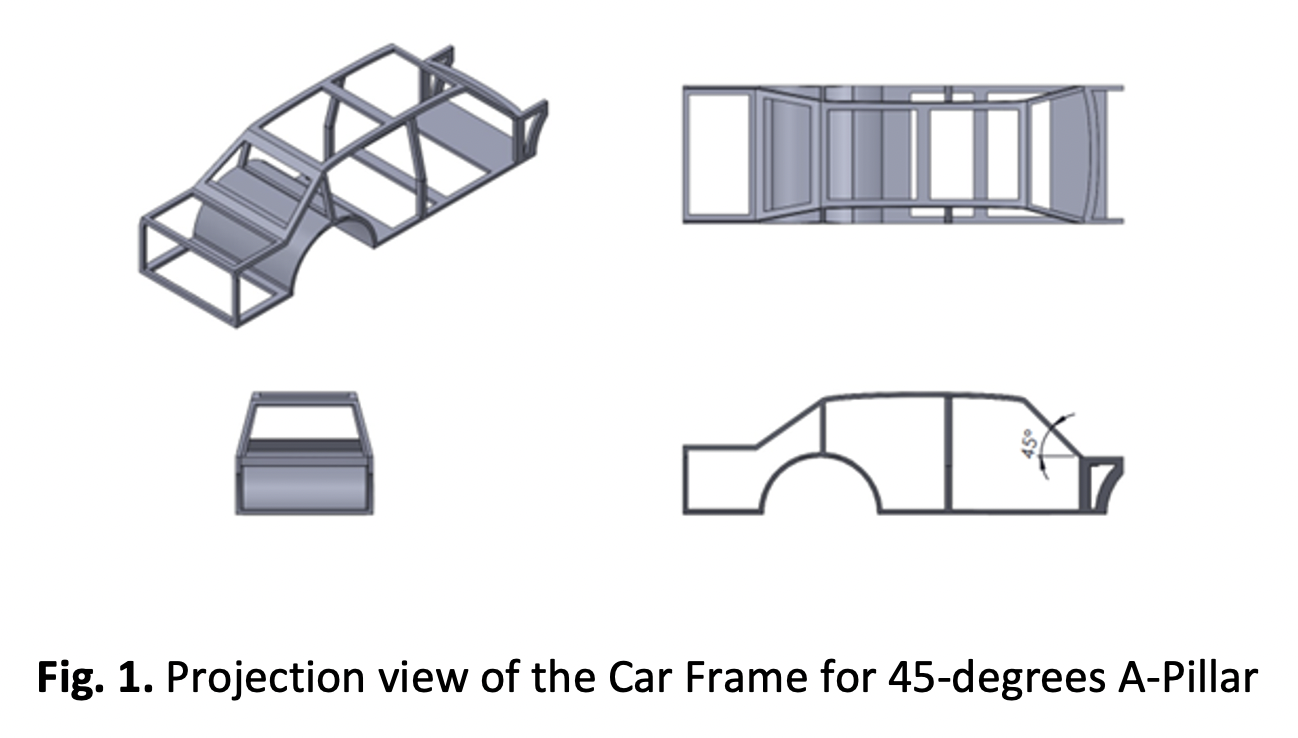Crash Investigation on Frontal Vehicle Chassis Frame using Finite Element Simulation
DOI:
https://doi.org/10.37934/araset.28.2.124134Keywords:
Rear-End, Crashworthiness, A-Pillar, Finite Element Simulation, Aluminium AlloyAbstract
Car chassis can be considered as the primary protective shield for the safety of the passenger during rear-end crashes. This study focuses on the deformation and failure behavior of the frontal car A-pillar chassis frame when subjected to collision with a heavy vehicle. Two different angles of the A-pillar chassis frame use are 45-degree and 70-degree. The crash simulation is conducted by using Finite Element software under the explicit dynamic. The car chassis frame geometries are designed by using SolidWorks 2021 and imported to the finite element software while a rigid block is designed in the finite element software as a rigid body to replicate the heavy vehicle. The chassis body is simulated for two types of materials, Aluminum alloy, and steel. The car speed impacted at 60 km/h. Results show that the intrusion of a rear barrier for 45 degrees of aluminum alloy will stop at 0.03 s but for 70 degrees it will intrude the car frame until the end. For the steel car frame, 45 degrees design is capable to withstand the intrusion of a rear barrier from a serious deform but for 70 degrees the intrusion will continue until the end. Car frame crush behavior, energy dissipation, and vehicle decelerations from the crash simulation were observed.
Downloads





























